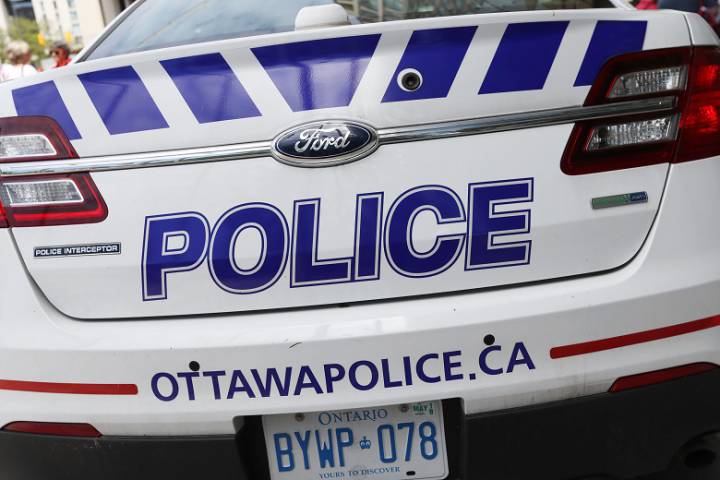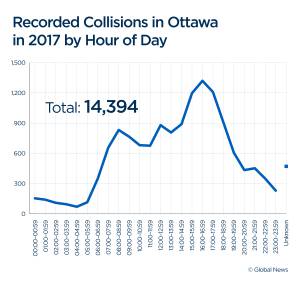
THE CANADIAN PRESS / Lars Hagberg
Ottawa police documented 32 traffic-related deaths last year, up 23 per cent from the 26 fatalities in 2016.
Ottawa police documented 32 traffic-related deaths last year, up 23 per cent from 26 fatalities in 2016.
The last time road deaths were that high — according to collision data available on the city’s website — was in 2010, when police recorded 38 deaths.
The statistics published last week show that vehicle drivers accounted for 20 of the 32 deaths resulting from traffic accidents in 2017 – the highest number of driver fatalities in a decade and double the 10 deaths recorded in 2016.
Staff Sgt. Frank D’Aoust, an acting inspector with the Ottawa Police Service, said the increase is “concerning” to police, calling road safety a “priority” for both the force and the chief of police.
“The statistics show that we need to improve,” he said in a phone interview Monday. “We need to bring down the collisions; we need to have a collaborative approach.”
“Every few years, when we have a public survey, road safety is always one of the top concerns from the public, so we want to make sure that we’re participating and addressing those concerns as best we can through enforcement, through collaborating with our safety partners and just improving the safety on the roads in Ottawa.”
The city compiles collision statistics documented by local police and publishes the data in an annual report. The oldest numbers available online are from 2007.
The other 12 victims of collisions in 2017 were vehicle passengers (4), pedestrians (5) and motorcyclists (3).
A piece of good news among the bad, though, is that zero cyclists and motorcycle passengers died in traffic crashes in 2017, police reported.
Twenty-eight of the 32 deaths in 2017 occurred on City of Ottawa roads; the remaining four occurred on the 400-series highways, D’Aoust said.
While D’Aoust said it’s difficult to say definitively what caused the relative spike in road deaths in 2017, he said more and more people are using the roads in general.
Between 2016 and 2017 alone, he noted, the number of registered vehicles went up by about 15,000, and the number of new drivers increased by approximately 5,000.
D’Aoust suggested this could be one reason why the total number of reported collisions rose as well in 2017: 14,394, up from 14,025 in 2016.
Distracted driving is also to blame for a number of accidents, police say. Ontario Provincial Police said in June this year that distracted driving — whether it be reading, eating or using your phone or GPS — continues to be the number one cause of crashes in the province.
D’Aoust said Ottawa police are working to get the number of road deaths in the city back down with help from the department’s fatal collision review committee, which meets following deadly road accidents.
He said police are zeroing in on the intersections where the highest number of traffic accidents occur and liaising with the engineering unit at city hall “to offer suggestions to improve our road design.”
The police service is also utilizing a “selective traffic enforcement program … that focuses on impaired driving, distracted driving, aggressive driving and seat belt use,” D’Aoust added.
“Every month, we have two initiatives or two priorities that we focus on. For July, we’re focusing on red light running and impaired driving,” he said.
Ultimately, though, drivers have to take responsibility too, D’Aoust emphasized.
“Drivers have to start paying attention to what they’re doing,” he said. “It’s going to take some enforcement… it’s going to take time for people to just get used to not having their phone on their lap… not having to communicate during that short time they’re commuting.”
The 2017 collision data shows the number of traffic accidents increases significantly between 3 p.m. and 6 p.m., when compared to other hours of the day.
D’Aoust’s message to drivers: Put the phone away; look out for pedestrians, cyclists and motorcyclists; look out for your blind spots; and slow down, especially during the afternoon rush hour.

Source: Global News
